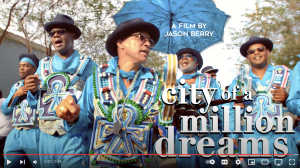St. Louis Cathedral, perhaps one of the most recognizable landmarks in the French Quarter and in New Orleans itself. One of the oldest churches in Louisiana, first established in 1727. Before that date, many other churches were built on the site. 1727 was the first time an official and semi-permanent building was built on the site.
The building itself was designed in 1721 by Adrien De Pauger. De Pauger was a prominent French architect. Upon seeing New Orleans for the first time he found it an unorganized and disheveled place. He sought to provide order with his skills as an engineer. Putting his focus on the Cathedral, he centered the rest of the city around the church. Putting a grid system into place and mapping his creation, he successfully put New Orleans on the map. He named the streets after people in power at the time and made sure that the people there knew the French were in power.
Some background on the French, at the time they ruled much of North America. Controlling much of what is now the Midwest, Canada, the Northeast, and of course some of the Mississippi Basin. The Spanish ruled the west and much of South America at this time. Many of Spanish settlements were constructed at an earlier or similar time to French and English settlements. Santa Fe was established in 1610, around the same time as Jamestown. Literally dominating the West, they took the Indigenous Peoples as slaves and forcibly converted them. They founded some of North America’s earliest European settlements. However, the French were the people who had conquered the most land in Early America and took up most of North America.
In 1788, a disaster happened. The Great Fire of St. Orleans not only destroyed the town, but also the Church. A new building was constructed in 1794; incidentally, the same year a second “Great” fire swept through the town. This fire demolished over two hundred buildings and displaced many families. “We had previously taken out of the artillery quarters every implement necessary to cut off the fire. We carried off from the treasury and deposited on the river banks all of your Majesty’s treasures, in currency and silver, over which a guard was kept, attended by that care against risk consequent on the confusion and disorder which necessarily occur at such a time” (Magee, Page, Thomas, Williams, Quote by Governor Esteban Rodriguez).
The leaders of the church wanted to build an expansion in 1849, however part of the Church collapsed. It is thought that the builders overestimated the structural integrity of the building. Once again, the church had to be built from the rubble. For the next seventy years, there was relative peace and serenity. Nothing more happened to it, this would change in 1909 with a bomb. Though the church was relatively unharmed, it did have minor damage.
No one knows who targeted the church but it was widely speculated that it was an attack by Italian immigrant workers. (GoNola.com) There is no way to test this theory, I find this highly improbable. Anarchists and anarchy were a large concern for a good portion of the population at this time. It was thought that immigrants, especially Italians, would implement anarchy. It would be easy to blame such an attack on immigrant laborers. To understand more about the history and context of this age, these two events must be understood, the assassination of McKinley and the Immigrant Act of 1903.
In 1901, McKinley was shot while meeting people. I could go further but to make this short, McKinley was assassinated by an anarchist called Leon Czolgosz. This cast further suspicion upon immigrants and their possible “contamination” by anarchism. In little more than two years since McKinley’s assassination, the Immigrant Act of 1903 was put into law. This sought to exclude immigrants from coming to the U.S. “That the following classes of aliens shall be excluded from admission into the United States . . . anarchists, or persons who believe in or advocate the overthrow by force or violence of the Government of the United States or of all government or all forms of law, or the assassination of public officials” (“Immigration Act of 1903, Immigrationhistory.org). Due to this context, I believe that this claim was very unlikely but not impossible. There had been anarchist attacks in the U.S before the early 1900s, but I think it would have been an altogether easy, almost too easy, way to explain away an attack.
Fast forward a hundred years, Hurricane Katrina was hitting New Orleans. Devastating hundreds of homes, businesses, and families. Washing away loved ones, homes, and dreams along with its surge, Katrina altogether ravaged New Orleans. Luckily, damage to St. Louis was minor. Only a couple of trees and outside gates were damaged during its landfall.
Despite all this history and context, the reader may be asking themselves, “Why St Louis, why study this?” Well, the answer is simple, I wanted to study an influential building in New Orleans. The study of architecture and a building’s history is fascinating. I love researching buildings and discovering a little miniature world inside them. The stories of hopes and dreams, of darkness and nightmares. All can be contained in a world made of brick and stone.
The story of St. Louis is certainly not over, as time passes more of its history will be sculpted and revealed. Only time will tell how its story ends. As more hurricanes and severe weather pass over New Orleans due to climate change, it is impossible to say how long it will survive. If the building itself gets destroyed, it will rise as so many reincarnations of the former buildings have done. New Orleans is resilient and the heart of the city will continue to beat.
An informal bibliography:
The Assassination of William McKinley and the Development of Presidential Security | Ohio History Connection
Miro. “The New Orleans Fire of 1788” (latech.edu)
NOLA History: The St. Louis Cathedral – GoNOLA.com
Our History | St Louis Cathedral
Adrien De Pauger (unknown-1726) – Find A Grave Memorial
Meet the man who put the French Quarter on the map (literally) | 300 for 300 | nola.com
Immigration Act of 1903 – Immigration History
1. Spanish Exploration, Exploration, American Beginnings: 1492-1690, Primary Resources in U.S. History and Literature, Toolbox Library, National Humanities Center

 Some background on how the French ended up in New Orleans, the French settled in Acadia, which is the present-day Maine and Canada area, in 1604. This settlement changed power a few different times until 1713 when Great Britain gained permanent control. The French in the area did not want to become British citizens so they moved to Louisiana, mainly southern Louisiana. These people became known as the Acadians from being from the area of Acadia. After the British had gained control of Acadia they forced most of the Acadians out, so they also moved mainly to Louisiana. The Acadians who moved to the New Orleans area later became known as Cajuns. These people brought their food and customs with them, thus they brought beignets to New Orleans. Today New Orleans is well known for beignets, with one of the most well-known restaurants for beignets in New Orleans is Café du Monde. With their popularity, Louisiana’s state doughnut is the beignet.
Some background on how the French ended up in New Orleans, the French settled in Acadia, which is the present-day Maine and Canada area, in 1604. This settlement changed power a few different times until 1713 when Great Britain gained permanent control. The French in the area did not want to become British citizens so they moved to Louisiana, mainly southern Louisiana. These people became known as the Acadians from being from the area of Acadia. After the British had gained control of Acadia they forced most of the Acadians out, so they also moved mainly to Louisiana. The Acadians who moved to the New Orleans area later became known as Cajuns. These people brought their food and customs with them, thus they brought beignets to New Orleans. Today New Orleans is well known for beignets, with one of the most well-known restaurants for beignets in New Orleans is Café du Monde. With their popularity, Louisiana’s state doughnut is the beignet.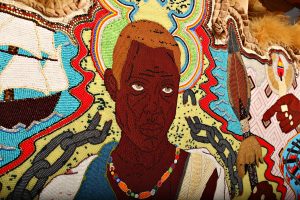 The forty Mardi Gras Indian Tribes with names such as the Congo Nation, Guardians of the Flame, Yellow Pocahontas and Wild Magnolias are a hard sight to miss when attending New Orleans celebrations like Mardi Gras, Super Sunday, and Saint Joseph Day. Their costumes, often weighing up to 150 pounds, are covered in feathers, rhinestones, beads, and velvet that dedicated artists have put a year’s worth of work into. Putting together one Mardi Gras Indian Costume is reported to cost around $5,000 in materials such as fabrics and countless beads. The intricate beading made by master beaders depicts stories of resilience. Costumes picture inspiring stories such as the Natives helping escaping slaves, Native traditions, spirit animals, and people who fought for equality amongst races such as Mr. Luther King Junior.
The forty Mardi Gras Indian Tribes with names such as the Congo Nation, Guardians of the Flame, Yellow Pocahontas and Wild Magnolias are a hard sight to miss when attending New Orleans celebrations like Mardi Gras, Super Sunday, and Saint Joseph Day. Their costumes, often weighing up to 150 pounds, are covered in feathers, rhinestones, beads, and velvet that dedicated artists have put a year’s worth of work into. Putting together one Mardi Gras Indian Costume is reported to cost around $5,000 in materials such as fabrics and countless beads. The intricate beading made by master beaders depicts stories of resilience. Costumes picture inspiring stories such as the Natives helping escaping slaves, Native traditions, spirit animals, and people who fought for equality amongst races such as Mr. Luther King Junior. 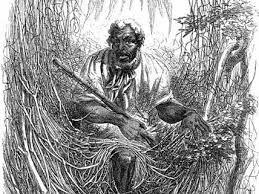 On multiple occasions, Native Americans fought with African Americans and also helped those that were escaping slavery as these two oppressed groups had the same “enemies”, the French white settlers of New Orleans. When slaves escaped from slave owners there was often help from the Natchez tribes which would either take in slaves or help them become marooned slaves. Marooned slaves were slaves that would run away to the Cyprus swamps of Bas du Fleuve Region in Louisiana where they would live hiding in the wilderness. Interestingly, a line from the modern Mardi Gras Indian chant, My Indian Red is, “ I am going into the wilderness”. It translates from “
On multiple occasions, Native Americans fought with African Americans and also helped those that were escaping slavery as these two oppressed groups had the same “enemies”, the French white settlers of New Orleans. When slaves escaped from slave owners there was often help from the Natchez tribes which would either take in slaves or help them become marooned slaves. Marooned slaves were slaves that would run away to the Cyprus swamps of Bas du Fleuve Region in Louisiana where they would live hiding in the wilderness. Interestingly, a line from the modern Mardi Gras Indian chant, My Indian Red is, “ I am going into the wilderness”. It translates from “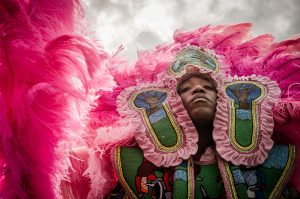 ral appropriation but from studies on the relations between Natives and Slaves, it seems that things are a little more complicated than that. The Mardi Gras Indians present themselves as a shared culture between two groups as John McCusker commented on above. Natives and African Americans often intermarried and had kids which meant that the cultures and identities of their offspring were mixed just like how the Mardi Gras Indians are a tradition that takes from two cultures. On the other hand, there are Mardi Gras Indians who are not related to one or the other of these two parties but make the claim that masking is a way for them to show their appreciation for the ways in which Natives helped African Americans escape their enslavement. Despite modern-day opinion on Mardi Gras Indians, there is one thing that is known for sure about these two groups in relation. Both Native Americans and African Americans had formed a relationship that blurred the lines between their differences to celebrate what they all had in common, a want for freedom. It might be a lesson that the United States could learn from.
ral appropriation but from studies on the relations between Natives and Slaves, it seems that things are a little more complicated than that. The Mardi Gras Indians present themselves as a shared culture between two groups as John McCusker commented on above. Natives and African Americans often intermarried and had kids which meant that the cultures and identities of their offspring were mixed just like how the Mardi Gras Indians are a tradition that takes from two cultures. On the other hand, there are Mardi Gras Indians who are not related to one or the other of these two parties but make the claim that masking is a way for them to show their appreciation for the ways in which Natives helped African Americans escape their enslavement. Despite modern-day opinion on Mardi Gras Indians, there is one thing that is known for sure about these two groups in relation. Both Native Americans and African Americans had formed a relationship that blurred the lines between their differences to celebrate what they all had in common, a want for freedom. It might be a lesson that the United States could learn from. 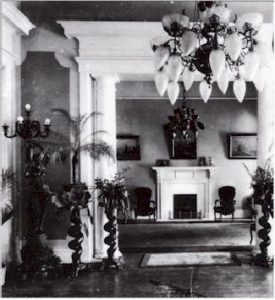 u. ‘Good time’ is her motto.”
u. ‘Good time’ is her motto.”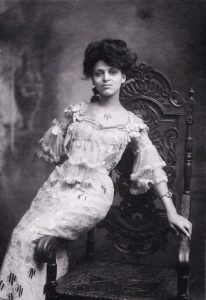

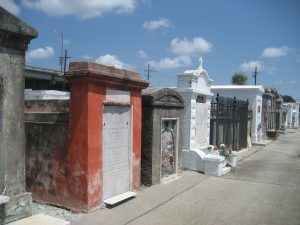
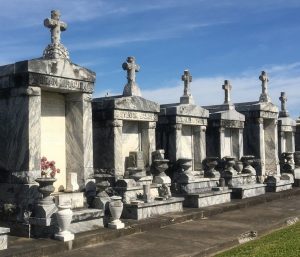
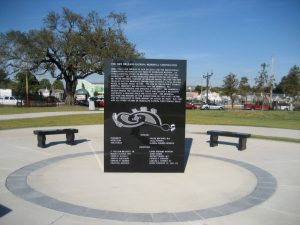

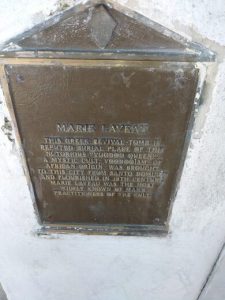
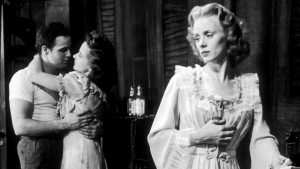

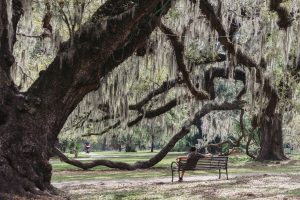 City Park
City Park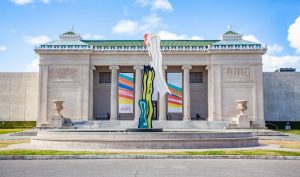 New Orleans Museum of Art
New Orleans Museum of Art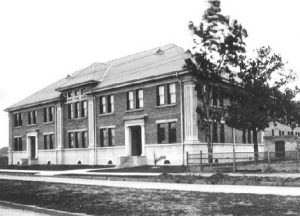 Isidore Newman Manual Training School
Isidore Newman Manual Training School